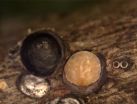(Press-News.org) Listeria is a dreaded bacterium that can be found in both unprocessed and processed foods. Over the last few weeks, 28 persons in Denmark have been infected with Listeria from processed food, sold in supermarkets. 13 have died.
The bacterium is notoriously difficult to fight because it has an almost uncanny ability to adapt to changes in its surroundings, says Associate Professor Birgitte Kallipolitis, University of Southern Denmark. Together with colleagues from the Department of Biochemistry and Molecular Biology, she has published a study, which in details reveals how this extreme ability to adapt takes place.
The researchers tested how Listeria reacts when it is exposed to a number of substances that can normally fight pathogenic bacteria. In the laboratory, Listeria was exposed to antibiotics, bile, salt, acid and ethanol, similar to what it often encounters in food, in the human body and during disinfection.
"We knew that Listeria can resist these substances, but we did not quite know how," says Birgitte Kallipolitis.
The researchers discovered that Listeria used a variety of strategies that enabled them to withstand the substances.
"Generally speaking, Listeria must be described as extremely adaptable. It is constantly aware of its surroundings and if the environment changes around it. It reacts instantly and has a number of strategies to withstand threats", says Birgitte Kallipolitis.
The researchers also discovered that Listeria is an expert at not attracting unwanted attention from the body's immune system.
"On the one hand, Listeria needs to produce some special proteins that enable it to infect the cells in our body. On the other hand, it must ensure that the body's immune system does not detect these proteins. It is vital for Listeria to keep a balance between producing enough of these proteins but not so many that they are detected by the immune system – and it masters just that", explains Birgitte Kallipolitis.
When in the lab, the researchers looked at what happened at the microbiological level. It turned out that Listeria started producing some special RNA molecules, when they were exposed to antibiotics, bile, salt, acid and ethanol.
"With these RNA molecules the bacteria can adjust how much or how little to produce of various proteins. For example it can downgrade the production of the protein LapB, which it uses to enter our cells. If this production is not downgraded, the bacterium will potentially be detected and fought by the immune system", says Birgitte Kallipolitis.
In other words: Listeria can fine-tune the production of the proteins needed to infect our cells to a point where there is exactly enough to sneak through the immune system's defense, but not so many that they are discovered.
The RNA molecules, produced when Listeria face dangerous environmental changes, also helps Listeria monitor its own cell wall. Antibiotics work by attacking the bacterial cell wall, and when exposed to antibiotics Listeria immediately detects that its cell wall is attacked. This enables it to quickly repair its cell wall - and thus become ready for combat again.
"We see this production of RNA molecules only when Listeria is exposed to threatening substances in the lab. When there are no threats, Listeria does not produce them. This reveals part of the mechanism behind Listeria´s extreme adaptability", concludes Birgitte Kallipolitis.
The understanding of how Listeria is able to survive antibiotics, the immune system and disinfecting agents is necessary in order to develop effective means against the life-threatening bacteria.
"Only by looking at what the bacteria themselves do to survive, we can become better at fighting their pathogenicity", says Birgitte Kallipolitis.
She and her colleagues are now investigating whether Listeria can be changed into harmless bacteria by removing the RNA molecules.
INFORMATION:
Contact: Associate Professor, PhD Birgitte Kallipolitis, bhk@bmb.sdu.dk. Phone: +45 6550 2372. Mobile: +45 6011 2372.
Ref http://nar.oxfordjournals.org/content/42/14/9383
Researchers discover why Listeria bacterium is so hard to fight
2014-08-27
ELSE PRESS RELEASES FROM THIS DATE:
Museum specimens, modern cities show how an insect pest will respond to climate change
2014-08-27
Researchers from North Carolina State University have found that century-old museum specimens hold clues to how global climate change will affect a common insect pest that can weaken and kill trees – and the news is not good.
"Recent studies found that scale insect populations increase on oak and maple trees in warmer urban areas, which raises the possibility that these pests may also increase with global warming," says Dr. Elsa Youngsteadt, a research associate at NC State and lead author of a paper on the work.
"More scale insects would be a problem, since scales ...
What lit up the universe?
2014-08-27
New research from UCL shows we will soon uncover the origin of the ultraviolet light that bathes the cosmos, helping scientists understand how galaxies were built.
The study published today in The Astrophysical Journal Letters by UCL cosmologists Dr Andrew Pontzen and Dr Hiranya Peiris (both UCL Physics & Astronomy), together with collaborators at Princeton and Barcelona Universities, shows how forthcoming astronomical surveys will reveal what lit up the cosmos.
"Which produces more light? A country's biggest cities or its many tiny towns?" asked Dr Pontzen, lead author ...
Sheepdogs use simple rules to herd sheep
2014-08-27
Sheepdogs use just two simple rules to round up large herds of sheep, scientists have discovered.
The findings could lead to the development of robots that can gather and herd livestock, crowd control techniques, or new methods to clean up the environment.
For the first time scientists used GPS technology to understand how sheepdogs do their jobs so well. Until now, they had no idea how the dogs manage to get so many unwilling sheep to move in the same direction.
NERC fellow, Dr Andrew King of Swansea University, fitted a flock of sheep and a sheepdog with backpacks ...
Everest expedition provides first evidence of effects of altitude on blood pressure
2014-08-27
An expedition to Mount Everest by Italian researchers has shown for the first time that blood pressure monitored over a 24-hour period rises progressively as people climb to higher altitudes. The researchers also found that while a drug used for lowering blood pressure, called telmisartan, was effective in counteracting the effects of altitude up to 3400 metres, it was not effective at 5400 metres above sea level – the height of the Everest base camp.
The study is published online today (Wednesday) in the European Heart Journal [1], and its findings have implications ...
Animals first flex their muscles
2014-08-27
An unusual new fossil discovery of one of the earliest animals on earth may also provide the oldest evidence of muscle tissue – the bundles of cells that make movement in animals possible.
The fossil, dating from 560 million years ago, was discovered in Newfoundland, Canada. On the basis of its four-fold symmetry, morphological characteristics, and what appear to be some of the earliest impressions of muscular tissue, researchers from the University of Cambridge, in collaboration with the University of Oxford and the Memorial University of Newfoundland, have interpreted ...
Sleep apnea treatment is effective for older people
2014-08-27
Continuous positive airway pressure is effective at treating sleep apnoea in older people, a new study has found.
Obstructive sleep apnoea (OSA) is a condition where the walls of the throat relax and narrow during sleep, interrupting normal breathing and causing profound sleepiness. For people with moderate or severe OSA, doctors usually recommend using a continuous positive airway pressure (CPAP) device, which consists of a small pump that delivers pressurised air into the nose through a mask, stopping the throat from closing.
Previous studies have established the ...
New scientific review investigates potential influences on recent UK winter floods
2014-08-27
A comprehensive review of all potential factors behind the 2013/2014 UK winter floods is published today in the journal Nature Climate Change. The paper does not definitively answer whether human activity played a role in the magnitude of the winter flood events. It does, though, examine how factors such as the state of the global oceans may have interacted with wind patterns and subsequent high-level atmospheric features.
The review was led by scientists at the Centre for Ecology & Hydrology, in collaboration with the Met Office and the Universities of Oxford, Exeter ...
Social inequalities in salt consumption remain
2014-08-27
People from low socio-economic positions in Britain still eat more salt than those from higher socio-economic positions, irrespective of where they live.
A paper published in the BMJ Open journal and led by Warwick Medical School suggests social inequalities in salt intake have hardly changed in the period from 2000-01 to 2011. This is despite a national average salt reduction over this time.
This paper is the first to monitor social inequalities following the national salt reduction programme.
The research was carried out by the World Health Organization Collaborating ...
New technology may identify tiny strains in body tissues before injuries occur
2014-08-27
VIDEO:
As a piece of plastic wrap is stretched, the new algorithms identify the location (in red) where it is weakening, which is where the material eventually breaks.
Click here for more information.
Researchers at Washington University in St. Louis have developed algorithms to identify weak spots in tendons, muscles and bones prone to tearing or breaking. The technology, which needs to be refined before it is used in patients, one day may help pinpoint minor strains and tiny ...
New estrogen-based compound suppresses binge-like eating behavior in female mice
2014-08-27
HOUSTON – (Aug. 26, 2014) – Binge eating, an eating disorder in which a person frequently consumes unusually large amounts of food in a short period of time, affects about 5 to 10 percent of U.S. adults and is more common in women than men. Researchers at the USDA/ARS Children's Nutrition Research Center at Baylor College of Medicine and Texas Children's Hospital found that the hormone estrogen can specifically trigger brain serotonin neurons to inhibit binge eating in female mice in a report today in the Journal of Clinical Investigation.
"Previous data has shown that ...





